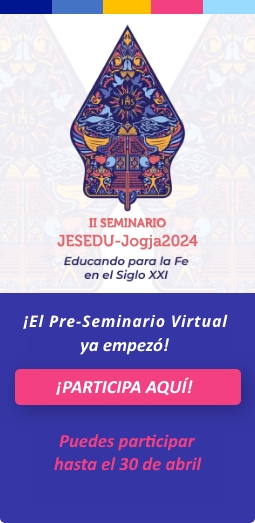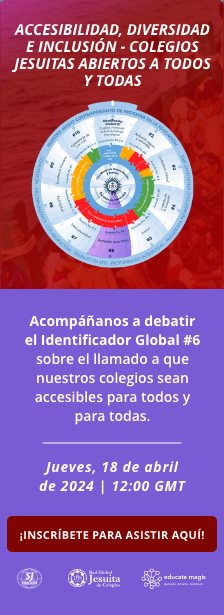«What have I done for Christ? What am I doing for Christ? What must I do for Christ?» Spiritual Exercises #53, Ignatius of Loyola
Our decision to come to Rio de Janeiro was a result of discernment, because Rio is a city that reflects the complexity of the regions and the world in which we live and work. On Wednesday, there was a change to the general structure of the Congress. At the end of the sending Mass, presided by Fr. Hugo Alexis Moreno, SJ, president of FLACSI, the participants left the Congress location to partake in a day of spiritual experience and pilgrimage, with the invitation to contemplate our world with the eyes of God.
While our participants traversed Rio they were animated to reflect on our whole world in its complexity and diversity. The Jesuit education delegates divided into five groups, accompanied by Jesuit scholastics and lay collaborators who helped to facilitate the pilgrimage experience. They visited three places in the southern part of Rio de Janeiro, a city of 6.3 million people.
During the pilgrimage we visited the community of Santa Marta, former property of the Colegio Santo Inácio and located just behind it. At the beginning of the 20th century, its occupation began, first by the families of the workers who were building the church and later by families from across the country. It eventually became one of the 730 so-called favelas in the city. It is a community dominated by high levels of social vulnerability and has a school at the foot of the hill which receives around 200 children up to the age of 6. The participants received a tour of the school and had a view of the Santa Marta community in its entirety. This was the first pilgrimage site.


The second pilgrimage site was the well-known Christ the Redeemer statue situated on the Corcovado hill. It is one of the most visited tourist attractions in Rio de Janeiro, from which you have a complete view of the city. On one side, you can observe the Bahia of Guanabara with its islands and surrounding area. On the other side, you can see the city between the mountains and the ocean: people, construction projects, streets, buses, the hectic life of a city that does not stop. Tourism plays an important role, as one of the largest sources of income for the city. Corcovado is an impressive place for visitors to have such a view. A place where one can contemplate the city of Rio in its contrasts, a place that manifests the city’s inequalities in which we live. God, what do you want us to do?

The pilgrimage concluded in the Botanical Garden where the five groups gathered together for the final moment of reflection in a vast green space, emphasizing the importance of ecological consciousness and caring for our common home.
Today our participants left as pilgrims, not as tourists, to find themselves in the city and its voices. Each destination played an important role but the central focus was on the journey in the Ignatian style. Seeking, listening, observing, reflecting. While the tourist looks, the pilgrim engages. The participants contemplated the lights and shadows, the wealth and poverty, the heart-wrenching inequality. It was a profoundly spiritual experience. A morning of prayer and reflection, of journeying between suffering and hope, of looking at the world with the eyes of God, seeking for that which God asks of us as individuals, as schools, as a global educational network.
Participants came back a little tired due to walking around in the sun, but they returned inspired and challenged to collaborate in the construction of a more humane and just world, a world where peace and reconciliation become reality. And the question of Ignatius of Loyola resonates within us: What have I done for Christ? What am I doing for Christ? What must I do for Christ?
Inicia sesión o Hazte miembro
para crear y ver comentarios

